K-12 Education and Outreach Collaborators
Welcome to the Center for Space Research K-12 Education and Outreach page! Our goal is for teachers and informal educators to discover a universe of educational programs and resources designed to inspire and engage students in the wonders of space exploration and research. Our mission is to foster a passion for STEM (Science, Technology, Engineering, and Mathematics) through innovative programs, partnerships, and interactive learning experiences.
Whether you’re a teacher or informal educator looking to integrate space science into your curriculum, or a student eager to delve into the mysteries of the cosmos, you’ll find something to spark your curiosity.
Astromaterials Research and Exploration Science Division or ARES
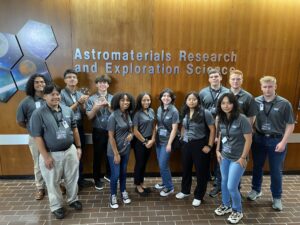 The mission of Astromaterials Research and Exploration Science Division, or ARES, is to combine scientific and engineering expertise in order to advance human space exploration, to integrate terrestrial and planetary research, and to promote successful space missions by mitigating risk. ARES staff are the world’s leading sample scientists, and they curate the most extensive collection of extraterrestrial materials on Earth.
The mission of Astromaterials Research and Exploration Science Division, or ARES, is to combine scientific and engineering expertise in order to advance human space exploration, to integrate terrestrial and planetary research, and to promote successful space missions by mitigating risk. ARES staff are the world’s leading sample scientists, and they curate the most extensive collection of extraterrestrial materials on Earth.
ARES Science Engagement efforts are aimed at sharing and engaging students, educators, the public, and the scientific community with the science, research, curation, and exploration conducted by the ARES Division. As a partner, ARES provides our STEM Enhancement in Earth and Space Science (SEES) Program with subject matter experts that mentor SEES Intern research, provide current NASA scientist/engineers for our (the) SEES Speaker Series, coordination of intern site visits to NASA Johnson Space Center and special events such as the VIP reveal event of the OSIRIS-REx (Origins, Spectral Interpretation, Resource Identification and Security – Regolith Explorer) asteroid sample return.
Planetary ReaCH
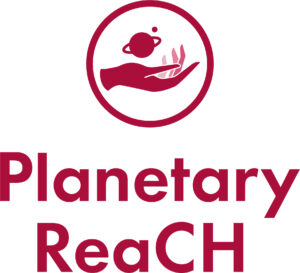 The Lunar and Planetary Institute and its partners are developing a process, or engagement model, to prepare planetary science subject matter experts (SMEs) to engage audiences within NASA’s Science Activation portfolio, with an explicit focus on Black and Latinx communities. Planetary ReaCH (Resources and Content Heroes) will prepare these planetary “content heroes” to engage audiences through 3-day Planetary Engagement Workshops. This innovative approach invites Science Activation teams and informal educators who serve minority communities to participate along with planetary SMEs. Participants will collaborate while learning to engage audiences in NASA planetary science.
The Lunar and Planetary Institute and its partners are developing a process, or engagement model, to prepare planetary science subject matter experts (SMEs) to engage audiences within NASA’s Science Activation portfolio, with an explicit focus on Black and Latinx communities. Planetary ReaCH (Resources and Content Heroes) will prepare these planetary “content heroes” to engage audiences through 3-day Planetary Engagement Workshops. This innovative approach invites Science Activation teams and informal educators who serve minority communities to participate along with planetary SMEs. Participants will collaborate while learning to engage audiences in NASA planetary science.
Planetary ReaCH will increase planetary SMEs and the Science Activation community’s capacity to successfully engage Black and Latinx communities. The ReaCH model will 1) increase the Science Activation portfolios’ capacity to access planetary SMEs and to engage audiences with planetary content, 2) increase the capacity of NASA planetary SMEs to engage audiences, and the frequency of public engagement, especially with Black and Latinx communities, and 3) increase audience interest and intent to engage with planetary science content.
Space for Teachers
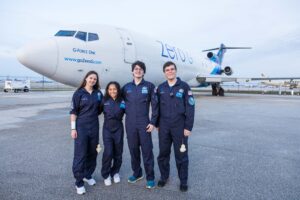 Space for Teachers (SfT) provides no-cost microgravity research opportunities for all K-12 student and teachers programs at the Center for Space Research. This includes the end-to-end implementation of SEES student parabolic flight program, ZQube flight integration, and student microgravity training and experiment development. Additionally, SfT provides educator training and curriculum for its microgravity programs, including the Embedded Teacher Program, Seed payload program, and ISS FASTLab, where students design experiments that astronauts conduct on the International Space Station.
Space for Teachers (SfT) provides no-cost microgravity research opportunities for all K-12 student and teachers programs at the Center for Space Research. This includes the end-to-end implementation of SEES student parabolic flight program, ZQube flight integration, and student microgravity training and experiment development. Additionally, SfT provides educator training and curriculum for its microgravity programs, including the Embedded Teacher Program, Seed payload program, and ISS FASTLab, where students design experiments that astronauts conduct on the International Space Station.
Texas Alliance for Boys and Girls Clubs
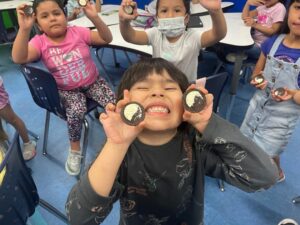 In 1999, the Texas Alliance of Boys & Girls Clubs was established to enable Boys & Girls Club organizations from across the state to come together as one “Movement” to effectively and efficiently work with public and private partners to address the state’s most pressing youth issues. Today, more than 345,000 boys and girls call their Club home. It is at the Club, where young people that need us most, learn and grow. Our goal is that all Club youth graduate from high school prepared for higher education, trade school, military service or employment.
In 1999, the Texas Alliance of Boys & Girls Clubs was established to enable Boys & Girls Club organizations from across the state to come together as one “Movement” to effectively and efficiently work with public and private partners to address the state’s most pressing youth issues. Today, more than 345,000 boys and girls call their Club home. It is at the Club, where young people that need us most, learn and grow. Our goal is that all Club youth graduate from high school prepared for higher education, trade school, military service or employment.
As a partner, UT/CSR Education and Outreach staff conducted training for Boys & Girls Club staff, coordinated the selection of planetary science activities with Boys & Girls Clubs in Texas, and assembled and distributed materials to each site. Sites were offered spring break NASA-themed camps, summer NASA-themed camps, and the opportunity to sign up for spring break camps in 2024. All sites provided eclipse activities and solar glasses for their students.
2022:
- Summer – 2634 students directly reached over 20 sites
2023:
- Spring – 3019 students directly reached over 28 sites were reached
- Summer – 4854 students directly reached over 30 sites
2024:
- Spring – 6883 students directly reached through 26 sites
- Eclipse – 4275 students were reached with Eclipse glasses and activities
** Close to 200 Boys and Girl staff trained over 2 years
Twiggs Space Lab
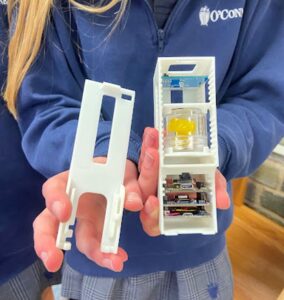 (TSL) creates STEAM based products and curriculum to engage and encourage students’ careers in technology and innovative space research. In partnership with the Space for Teachers, TSL provides inexpensive remote sensing platforms for SEES student research in microgravity, on high altitude balloons, and on Earth. This includes the ZQube, a versatile sensor with an integrated camera and payload compartment, used in the SEES student parabolic flight program. The ZQube and other TSL sensors are designed for ease of teacher and student collaboration, video, and data sharing. The modular design is made to fit existing spaces onboard ZERO-G, orbital, and suborbital transportation systems.
(TSL) creates STEAM based products and curriculum to engage and encourage students’ careers in technology and innovative space research. In partnership with the Space for Teachers, TSL provides inexpensive remote sensing platforms for SEES student research in microgravity, on high altitude balloons, and on Earth. This includes the ZQube, a versatile sensor with an integrated camera and payload compartment, used in the SEES student parabolic flight program. The ZQube and other TSL sensors are designed for ease of teacher and student collaboration, video, and data sharing. The modular design is made to fit existing spaces onboard ZERO-G, orbital, and suborbital transportation systems.
Wisconsin Space Grant Consortium
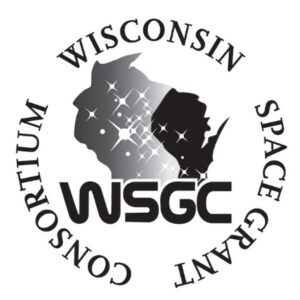 Wisconsin Space Grant Consortium, in partnership with Space for Teachers, operates the Embedded Teacher Program, which supports SEES student parabolic flight research by providing free experiment and flight integration services for students and student payload. Additionally, WSGC collaborates with the Center for Space Research to develop educational programs for NASA’s Quesst mission, which aims to achieve supersonic flight without a disruptive sonic boom.
Wisconsin Space Grant Consortium, in partnership with Space for Teachers, operates the Embedded Teacher Program, which supports SEES student parabolic flight research by providing free experiment and flight integration services for students and student payload. Additionally, WSGC collaborates with the Center for Space Research to develop educational programs for NASA’s Quesst mission, which aims to achieve supersonic flight without a disruptive sonic boom.